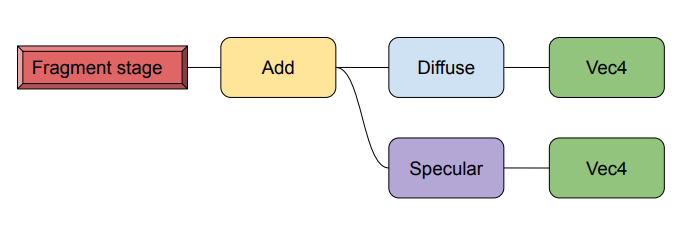Finally, the very first 3D model rendered by the 3D engine. Even if it looks like a simple torus demo, the main feature this time is the format used for the 3D mesh and the convertion from material nodes to vulkan shader, for the rendering.
The mesh is composed by a polygon hull, a set of vertex attributes and a layout that defines the nature of vertex attributes. The polygon hull represents the geometric structure of the mesh while vertex attributes define the graphics and the physical aspect. A mesh can have virtually any number of vertex attributes, that can be: position, normal, colors, texcoords and other new attributes used by the material.
Materials are composed by expression nodes, then converted to shaders in a second step. Every material has a layout with the number of vertex attributes required for the rendering. The material structure used to render this model is the following:
 The layout of the mesh doesn't have to match exactly with the material's one: if the mesh has the required vertex attribute then it's used, otherwise 0 values are used instead. It's for the material to decide how to use the vertex attributes offered by the mesh. In this way, a single material can be used to render any kind of mesh. Of course, a mesh without normals cannot render diffuse or specular, or without texcoords cannot render textures, normal maps and so on.
The layout of the mesh doesn't have to match exactly with the material's one: if the mesh has the required vertex attribute then it's used, otherwise 0 values are used instead. It's for the material to decide how to use the vertex attributes offered by the mesh. In this way, a single material can be used to render any kind of mesh. Of course, a mesh without normals cannot render diffuse or specular, or without texcoords cannot render textures, normal maps and so on.
Uniform buffers can be used by a single mesh to change the material content, like colors or texture coords. For instance, the color of diffuse in this material can be connected to a uniform contained by a 3D mesh, that can be changed on the fly, changing the color of the object. In this way, it's possible to reuse the same materials for multiple objects, even with different aspects, like particles or game characters.
